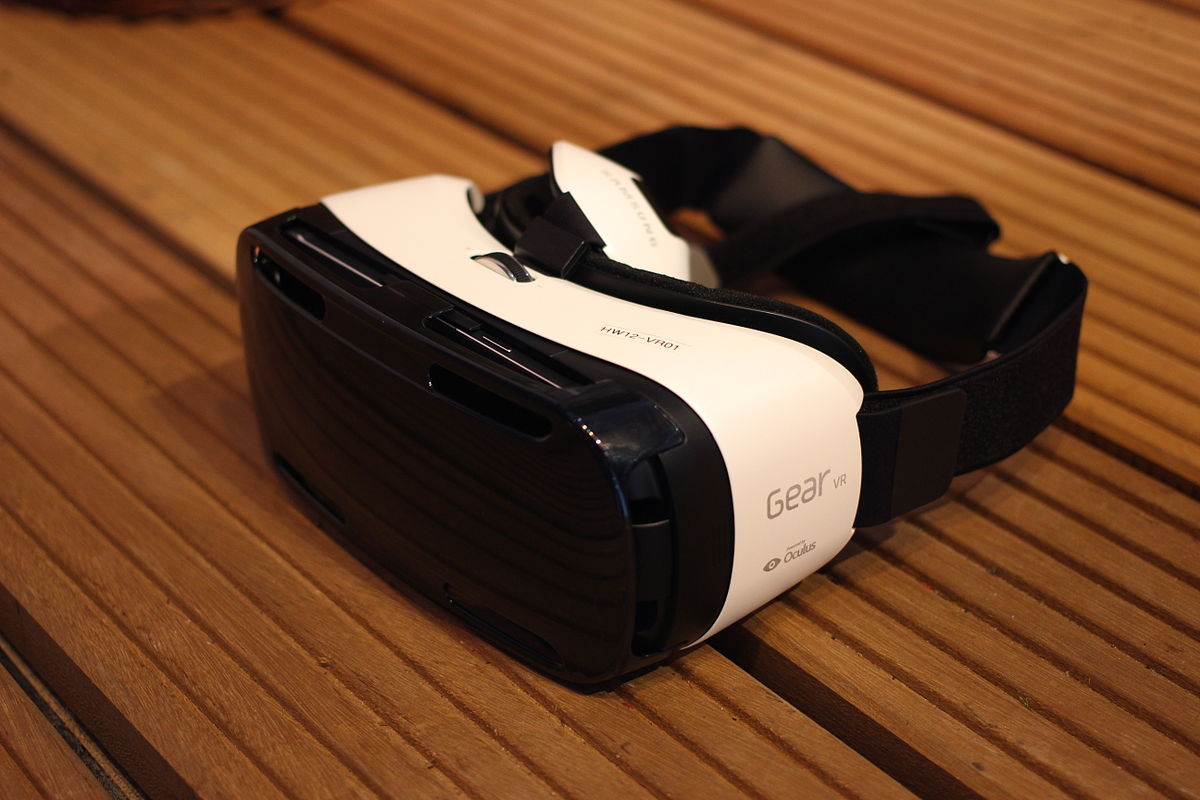Difference between revisions of "Samsung Gear VR"
m (typo) |
(characteristic) |
||
| Line 76: | Line 76: | ||
== Main characteristics == | == Main characteristics == | ||
| − | + | ||
| + | Gear VR optics have 96 degrees filed of view and the smartphone housing features several additional components. There is a number of sensors present (accelerometer, gyroscope, proximity, magnetometer). The user interface consists of touchpad, buttons and a volume key. In addition, there is a wheel at the top of the device to adjust the interpupillary distance. In contrast to the previous one, the release version of the device will not feature the micro fan that helped to de-fog the lenses. Instead, the new model uses a different material for padding.<ref>http://www.gizmag.com/new-consumer-gear-vr-hands-on/39589/</ref> | ||
| + | |||
=== Purpose === | === Purpose === | ||
| Line 83: | Line 85: | ||
=== Company & People === | === Company & People === | ||
<!-- This is a list of important people behind the technology. Note: It is not necessary to list absolutely everyone. --> | <!-- This is a list of important people behind the technology. Note: It is not necessary to list absolutely everyone. --> | ||
| − | + | ||
== Important Dates == | == Important Dates == | ||
<!-- A list of important dates in the development and history of the technology. Use the information provided in the second half of the Main characteristics section and make it into a short, unnumbered list. --> | <!-- A list of important dates in the development and history of the technology. Use the information provided in the second half of the Main characteristics section and make it into a short, unnumbered list. --> | ||
Revision as of 14:28, 13 October 2015
| Samsung Gear VR | |
|---|---|

|
|
| Category | VR device (smartphone holder) |
| Developer | Samsung Electronics Co., Ltd. |
| Announced | September 2014 |
| Released | Developers:
Consumers: November 2015[1] |
| Price | 200 USD (2015) |
| Operating system | Android |
| Display | |
| Resolution | pixels |
| Weight | g |
| Controls | smartphone, touchpad, inertial, buttons |
| Not standalone[2] | |
| http://www.samsung.com/global/microsite/gearvr/index.html | |
Gear VR is a smartphone-holder virtual reality device developed by Samsung and Oculus VR in cooperation. Gear VR is, by itself, not a fully featured virtual reality head-mounted display, because it only features the housing for a smartphone, lenses, and a basic control interface. The device needs a Samsung smartphone to fully function, as it does not have any processing or displaying capabilities on its own. The upcoming release version is compatible with Samsung Galaxy S6, S6 Edge, S6 Edge+, and Note 5 smartphones. The previous Innovator Edition was compatible only with the Samsung Note 4.[3] If no other device release is announced, the Gear VR will be the fist virtual reality device released outside of a developer or early-access program in the year 2015[4]
Contents
Main characteristics
Gear VR optics have 96 degrees filed of view and the smartphone housing features several additional components. There is a number of sensors present (accelerometer, gyroscope, proximity, magnetometer). The user interface consists of touchpad, buttons and a volume key. In addition, there is a wheel at the top of the device to adjust the interpupillary distance. In contrast to the previous one, the release version of the device will not feature the micro fan that helped to de-fog the lenses. Instead, the new model uses a different material for padding.[5]
Purpose
Company & People
Important Dates
Ethical Issues
Health Risks
Enhancement/Therapy/Treatment
Public & Media Impact and Presentation
Public Policy
Related Technologies, Project or Scientific Research
References
- ↑ http://www.cnet.com/news/hulu-virtual-reality-app-is-ready-for-its-close-up-in-november/
- ↑ Shows if the device is a standalone wearable computer or if it needs to be connected to a processing unit (computer, smartphone) to function.
- ↑ http://www.amazon.com/Samsung-Gear-VR-Innovator-Edition/dp/B00QZLOFK4
- ↑ http://www.theverge.com/2015/9/25/9397569/samsung-oculus-consumer-gear-vr-design
- ↑ http://www.gizmag.com/new-consumer-gear-vr-hands-on/39589/